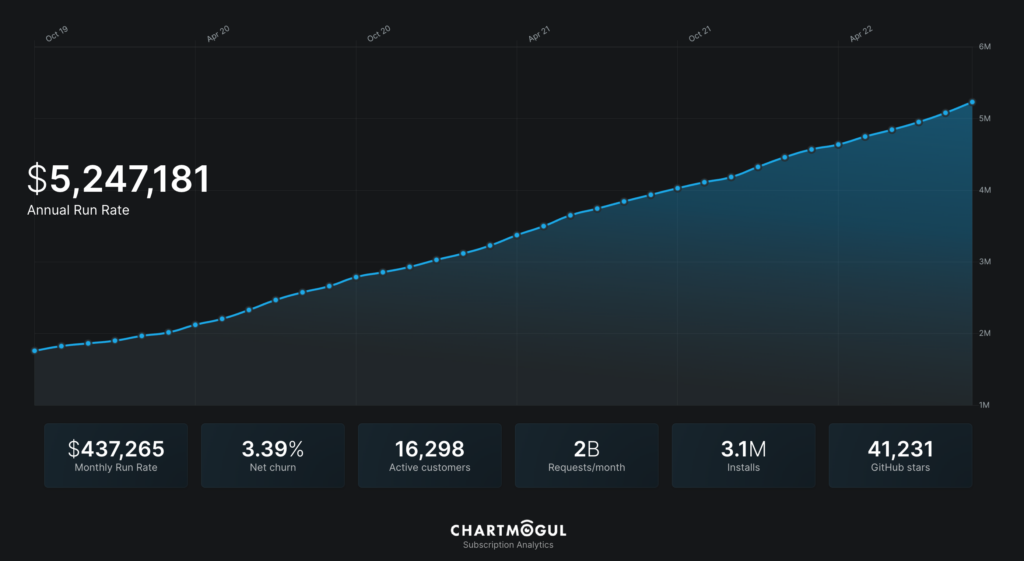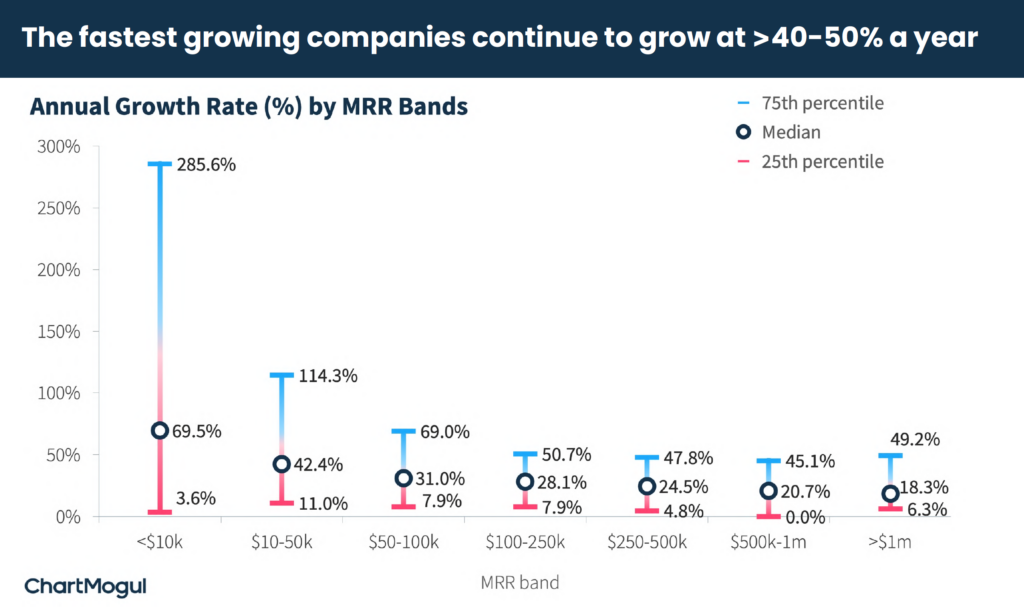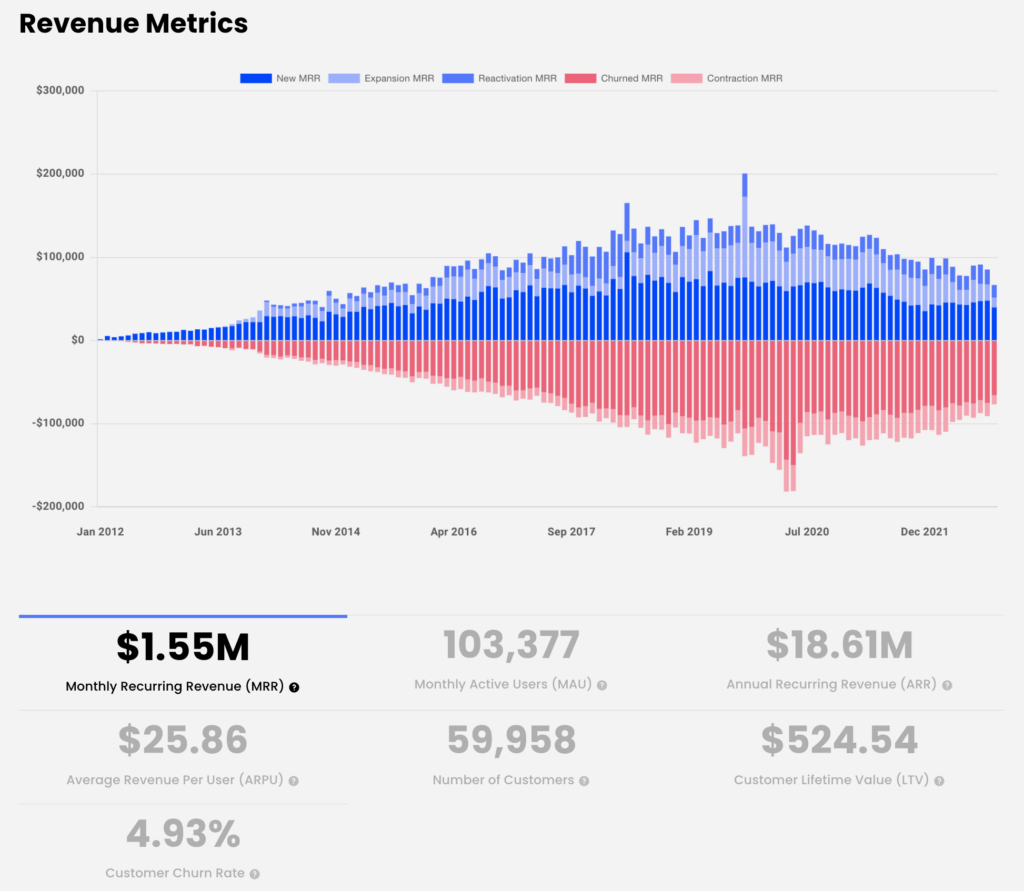SaaS ARR is most commonly known as Annual Recurring Revenue. Subscription businesses track this metric to better understand their revenue and to predict the company’s growth.
HOWEVER, there’s a ton of confusion out there surrounding annual recurring revenue and how to calculate it. Common questions are:
What does ARR truly mean? Annualized Run Rate or Annual Recurring Revenue?
Even some of the biggest SaaS businesses are treading water when it comes to ARR. This article will clear things up for you.
Short on time?
➡️ If you’re new to all of this, read on.
➡️ If you’re charging your customer on a yearly basis, go here.
➡️If your business is based on both monthly and yearly contracts, go here.
TL;DR
- ARR is an acronym for two SaaS metrics: Annualized Run Rate and Annual Recurring Revenue
- Annualized Run Rate = MRR X 12
- Annual Recurring Revenue = Total contract value / number of years
What does ARR actually mean in SaaS? Annual Recurring Revenue explained
ARR stands for “Annual Recurring Revenue,” which has a rather strict definition of looking at recurring contracts with a service length of one year or more. It discards everything else.
What’s important to note here is the word Annual: it’s there for a reason. Any contract less than 12 months in length should be excluded from this definition of Annual Recurring Revenue.
In short, annual recurring revenue is: total contract value / number of years.
Worse still, it’s also been used by transactional businesses who don’t sell subscriptions at all. These businesses use it to inflate their revenue number and sound more “SaaSy.” For example, by taking their most recent “best” month of sales and multiplying it by 12. 🤢
Where does the Annual Recurring Revenue metric come from?
Measuring yearly income initially made sense in the early years of subscription businesses.
The first generation of SaaS companies (the millennials): Marketo, Pardot, Workday, for example, typically charged annually—or even multi-year. Their users didn’t have a choice; contracts were more rigid.
It made sense for SaaS companies to measure this metric at face value.
However, today things are a little more complicated. The second generation of SaaS businesses (The Gen Zs of SaaS): Zendesk, Codility, Intercom, MailChimp, and the current generation (Alphas—younger than 10-years-old): Notion, Zoom, and ChartMogul, embraced monthly billing as standard.
This shift means your typical SaaS startup (launched in the last ~8 years) makes the majority of its revenues from month-to-month subscriptions.
This “mostly-monthly” approach has rendered the traditional meaning of ARR, “Annual Recurring Revenue,” almost meaningless for these companies. Yet, many are still tracking it as it’s been part of our SaaS ecosystem since Salesforce started.
Why is ARR important in a SaaS business?
Annual Recurring Revenue is still a helpful metric if your business makes the vast majority of its revenue from annual or multi-year contracts.
Annual Recurring Revenue is contracted revenue, so there is a high level of certainty that this money will be collected. If your new customers are happy paying yearly contracts then fantastic, and this metric is well worth using to help you track recurring revenue.
However, for many modern SaaS companies, this isn’t a very relevant metric for many modern SaaS companies: if most of your revenue is from a monthly contract subscription model. There’s just not a whole lot of point in talking about Annual Recurring Revenue if only 20% or even 40% of your revenues are from annual contracts.
How to calculate Annual Recurring Revenue (ARR)?
SaaS companies that run only on yearly and multi-year contracts calculate ARR with the below formula.
ARR formula:
ARR = Total contract value / number of years
Example of ARR
An example of ARR would be:
Let’s say X company signs a multi-year contract of €6,000 for 4 years.
The ARR for X company’s account = €6,000 / 4
ARR = 1,500
There’s a large debate on whether this metric can be a prediction metric: anticipated, or an actual metric: happened. In my opinion, it’s an actual metric. However, this metric can help you predict your future recurring revenue, when combined with all subscribed accounts, should you continue at your current pace.
The other side of the coin, is that people predict ARR going on their monthly recurring revenue (MRR). However, they can only do this when they’re considering ARR as Annualized Run Rate. Grab a cup of something hot, we’re going in deeper. ☕
What is ARR: Annualized Run Rate?
Enter, Annualized Run Rate, a different metric, calculated in a different way, but with the same acronym 🤯. Bear with me.
Annualized Run Rate, (or Annualised Run Rate for those who prefer British English) is a way of annualizing a company’s revenue run rate. In SaaS, this is generally done by taking the MRR and multiplying it by 12.
Hence, Annualized Run Rate (ARR) = MRR * 12.
It’s often also referred to as simply “Annual Run Rate,” or lengthened to “Annualized Revenue Run Rate.”
For most modern SaaS companies whose revenue mix consists monthly subscriptions, this definition of ARR is much more meaningful.
Why should you measure Annualized Run Rate (ARR)?
Looking at your annualized revenue run rate is helpful for decision-making.
It’s hard to think about $416,667 of MRR; what does that buy you? Convert that into ARR and you have $5M in forward-looking recurring revenues ($5M ARR), a much easier number to think about when planning and talking about your business, internally and externally.
Annualized Run Rate provides a holistic view of your SaaS standing, it helps founders and C-suite assess the success of the company in the long term.
However, relying on Annualized Run Rate has its negatives, which I’ll discuss further on.
ARR vs MRR: what’s the difference?
The two metrics are often used side by side, but not everyone knows when or how to use them together. ARR provides a holistic view of your SaaS business and its finances, while MRR dives in a level deeper.
Understanding ARR will help you develop long-term growth strategies, whereas understanding MRR will help you develop short-term, month-on-month, even seasonal strategies to ensure a steady growth.
ARR is the go-to for SaaS businesses that are still signing multi-year contracts. Whereas, MRR is a best-fit for newer startups with more flexible financing options—those billing monthly.
ARR and MRR are both solid metrics to track, yet they may not both work for one SaaS model.
When should you use Monthly Recurring Revenue (MRR)?
You should be using monthly recurring revenuer (MRR) as a metric if 70% or more of your profits come from monthly subscriptions, i.e., you don’t sell contracts by the year. This should give you a clear idea of your company’s recurring revenue per month, and the expansion revenue you have to play with.
Knowing the difference between ARR and MRR is one thing, but knowing when to track them is something else entirely. Identify which one your SaaS needs to track and stick to it.
Note: You do not only need your MRR to figure out your ARR; MRR is a stand-alone metric in itself and can drastically support short-term SaaS growth strategies. Speaking of…
What’s a good growth rate for SaaS?
Although every SaaS company’s growth is different, let’s take a look a Ghost for a specific growth rate breakdown. Ghost actively uses open source technology and subscription analytics for business growth.
Ghost’s public ChartMogul dashboard has helped the journalist’s blogging platform reach a 5.1m ARR through transparency and non-profit growth. It has resulted in an average YoY growth of 52%.

“When you stop growing, you start dying.”—William S. Burroughs. True as much about life as it is for SaaS. So, let’s take a leaf out of our SaaS benchmark report to see how your growth compares to other SaaS companies out there.

In the very first stages (<$10k MRR), startups grow by 69.5% on average each year. As the startup continues its march towards the $100k MRR mark, it grows at a median rate of 31%. Over time, as the company reaches a sizable revenue, growth slows down on average to 18.3%.
Looking at percentiles, growth at the early stages of a startup’s journey is dispersed. The fastest-growing startups outgrow slower ones multiple times over. This is expected, some startups find product-market fit quickly and can start scaling, while others need more time to keep looking for it.
Download the full report here.
How can you increase ARR for a SaaS business?
You can increase your SaaS ARR by analyzing your current revenue metrics and identifying the easiest route to increase those metrics. These routes could be:
- Increase new user count
- Increase ARPA (average revenue per account)
- Reduce churn
There are more fantastic, underappreciated growth metrics.
Buffer, the social media toolkit for small businesses, reached a $22m ARR by investing in new analytics tools (Ahem!) and growing their Average Revenue Per Account (ARPA). They did this from the time they raised their Series A funding to when they bought out their Series A investors.
It’s important to note that certain strategies work at certain times on a company’s growth path.
Buffer was not able to do one without the other.

The social media management giant was struggling with its data analytics solutions for years, they required a huge time investment and as their MAU grew, their manual processes grew harder to maintain.
Their analytics solutions, ChartMogul and MixPanel, highlighted that although their ARR was strong, it would be a huge lift to take it from $16M ARR to $50M in ARR by only increasing their customer count. Instead, they turned toward their current users and knuckled down on increasing their ARPA.
They did this by:
- Updating their pricing and packaging structure
- Expanding their product offering
You cannot increase the ARR of a subscription model business by telling your product or marketing team to increase ARR. You need actionable steps for your teams to implement, which will, in turn, increase ARR.
These actionable steps come from looking at your revenue analytics.
Annualized Run Rate is rightly winning the acronym battle
Today, most SaaS companies have a big chunk of their revenues from monthly subscriptions. Annualized Run Rate has naturally become the more popular metric in recent years, and, therefore the more popular usage of ARR today. However, search engines are struggling to keep up and it’s throwing founders off track.
Annualized Run Rate winning the acronym battle was probably helped by Subscription Analytics companies like ChartMogul baking that metric and definition of ARR into their products. You’re welcome.
It’s not just startups doing this; Zendesk defines ARR this way in their investor reports:
Zendesk determines the annual recurring revenue value of a contract by multiplying the monthly recurring revenue for such contract by twelve.
The SaaS industry is moving in a different direction.
I do think there is a twofold dislike developing in SaaS:
(1) Many VCs came up when ARR only meant Annual Recurring Revenue. It now creates confusion for them when comparing companies to have two metrics sharing the same acronym. So, they end up comparing apples to oranges, so to speak.
(2) The more legitimate reason for disliking Annualized Run Rate is because it’s started being abused.
For example, it’s used by subscription companies with a high monthly churn, such that the declared ARR will never actually materialize, because the average customer will cancel before 12 months of fees will ever be collected. This can be obfuscated by the layering on of new customers down the line.
I would argue that Annualized Run Rate should only be relied on when a company has net negative churn—Jason Lemkin seems to have concluded the same. Only then will a company actually collect the ‘claimed’ ARR. Anything below negative churn, and they won’t actually collect MRR x 12 from their existing customers.
Matt Quinn says all we need to do is clarify what definition of ARR you’re using, and all will be fine:
Wrapping up ARR for you
In the ChartMogul app, ARR is defined as Annual(ized) Run Rate, MRR x 12. This is the most popular meaning of ARR and the most broadly useful one today.
Two metrics, one acronym, and a heck of a lot of debate. 😰 I hope this article has helped clear things up, and no matter which way you’re using the acronym in the future, you’re aware of both.
In my opinion, perhaps one of these acronyms needs to step aside and adopt another letter. Perhaps they both do?
$83,334 MRR * 12 to the moon 🚀🌑 ;-)
SaaS ARR FAQs
What is ARR?
ARR stands for Annualize Run Rate. ARR annualizes a company’s revenue run rate. In SaaS, this is done by taking your MRR and multiplying it by 12. Annualized Run Rate (ARR) = MRR * 12.
What is the purpose of the ARR metric in the SaaS industry?
Annual Recurring Revenue (ARR) enables SaaS businesses to understand how much money they are making off of their annual contracts each year. This acronym is often confused with Annual(ized) Run Rate.
ARR and MRR are both important growth metrics to track depending on your SaaS subscription model.
Why track ARR as a SaaS business?
When SaaS businesses track ARR, they are able to make better financial decisions, predict the company’s growth and build strategies to better ensure they hit their growth and revenue goals.
ARR vs MRR?
ARR stands for Annualized Run Rate and MRR stands for Monthly Recurring Revenue. Also, ARR is MRR multiplied by twelve. Both these metrics are crucial in SaaS to help make better business growth decisions.
How long does it take a SaaS company to increase ARR?
How much recurring revenue your SaaS makes per year can be increased in a matter of months if done well. You’ll need to lock on a go-to-market strategy and a product growth strategy in order to increase your ARR with confidence.
What is a good growth rate?
The ChartMogule SaaS Benchmark Report shows startups with less than $10k MRR grow by close to 70% on average each year. When startups reach around $100k MRR, they grow at a median rate of 31%. After that, growth tends to slow to an average of 18.3%.
